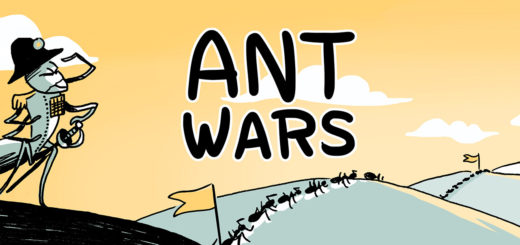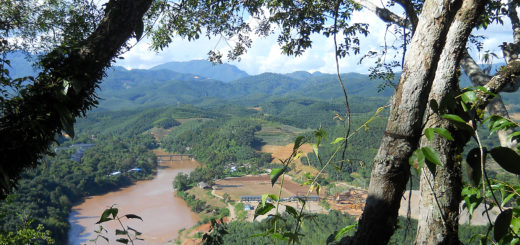Cuticular hydrocarbons in ants and other insects
In the recently published review article “Cuticular hydrocarbons in ants (Hymenoptera: Formicidae) and other insects: how and why they differ among individuals, colonies, and species” published in Myrmecological News, Philipp P. Sprenger and Florian Menzel review the vast diversity of cuticular hydrocarbons. They create an overview of what is known about CHC variation and discuss sources of variation. Here, Falko Drijfhout highlights their main points.
A Review by Falko Drijfhout
This review, written by Sprenger and Menzel, is an excellent review, and I’m convinced that it will be a key publication for many future works. Although several other reviews and books have been published in the last decade on the topic of cuticular hydrocarbons (CHC) in insects, this review is very unique as it provides the reader a very extensive yet concise review focusing on how and why these compounds differ. In an expert manner, several factors that could or do influence CHC composition in insects are discussed, ending with an exciting final conclusion that I’m sure will inspire several new research projects; all of which are much needed to unravel the function and associated changes of the cuticular hydrocarbon composition in insects.
What I liked about the review is the ability of the authors to show the complexity of the issue in a very clear manner. It is very obvious from this review that indeed there are many, many factors that influence CHC composition. Using a range of different examples, the authors were able to show that at times these factors are working in parallel, but in other instances, these factors result in opposing changes within the CHC composition.
In my commentary, I would like to draw out three aspects of the review which make this a piece of work that every researcher in this area should be familiar with.
Firstly, the need for a better understanding on the biosynthetic aspects of changes. The authors very clearly show that currently there is an accepted route in which these hydrocarbons are synthesized, but there is a clear lack of understanding regarding the specificity of the enzymes associated with changes to the overall CHC composition. I appreciated the open discussion regarding the possible constraints that insects have in synthesizing these compounds, including the suggestion on why a homologous series of CHCs are found on the cuticle rather than a single CHC type.
Second, and related to the first aspect, I believe the authors hit the nail on the head with their comment regarding the transport of CHCs in an organism. It is very true that our knowledge on the precise mechanism of CHC transport is still unknown, but I believe it is crucial in establishing how and why profiles are changed under the influence of all the factors described in the review.
Finally, the need for bioassays is clearly stated. The usefulness of multivariate analysis is mentioned and in my view very relevant, but at the same time, this should be followed by bioassays to empirically test the effects of any changes observed. I fully acknowledge that this approach is severely hampered by the lack of the availability of specific hydrocarbons, but the approach taken by Holman et al. (2010) and Martin et al. (2008), establishing the role of a single hydrocarbon and “alkenes versus alkanes”, should be followed up to establish the role of other methyl-branched hydrocarbons for instance. Only then can we say that the changes observed are “real” changes resulting in a biological change.
The review is in my opinion limited in addressing the issue of how these hydrocarbons are analysed chemically and specifically the way in which researchers acquire data on the presence and abundance of surface compounds. Any bias in this chemical analysis, or possible hindrance in getting accurate data, will affect any data analysis done afterwards. Three aspects of the chemical analysis need to be taken into account.
Firstly, and this has been alluded to in the review, is the analysed data reflecting biological reality or a research bias? Should we focus on hydrocarbons to get the full picture? How many non-hydrocarbons play a crucial role? Maybe even in conjunction with hydrocarbons? [MNB: Non-hydrocarbons are compounds present on the cuticle that are not a hydrocarbon]
Secondly, are we restricted in making progress due to the inability to separate all CHCs from each other? Several mono-methyl and dimethyl-hydrocarbons are eluting very close and in publications are either analysed as a single entity (as a mixture of two or more CHCs), or at best there is an attempt to separate them, but in an imperfect way.
Finally, the issue of chirality of many of these compounds are almost completely ignored (or not addressed), which is understandable due to the complexity in determining the chirality of hydrocarbons, but knowing this part of the puzzle, may shed new light on speciation dynamics, for instance.
Cuticular hydrocarbons still are and need to be a major topic of research in insects, and this review is excelling in pinpointing a number of areas that need to be addressed to unravel the complex but fascinating role of CHC in insects!
References:
Holman, L., Jørgensen, C.G., Nielsen, J. & D’Ettorre, P. 2010: Identification of an ant queen pheromone regulating worker sterility. – Proceedings of the Royal Society B-Biological Sciences 277: 3793-3800.
Martin SJ, Vitikainen E, Helanterä H. & Drijfhout FP. 2008: Chemical basis of nestmate recognition in the ant Formica exsecta. Proceedings of the Royal Society B-Biological Sciences 275:1271–1278






Recent Comments